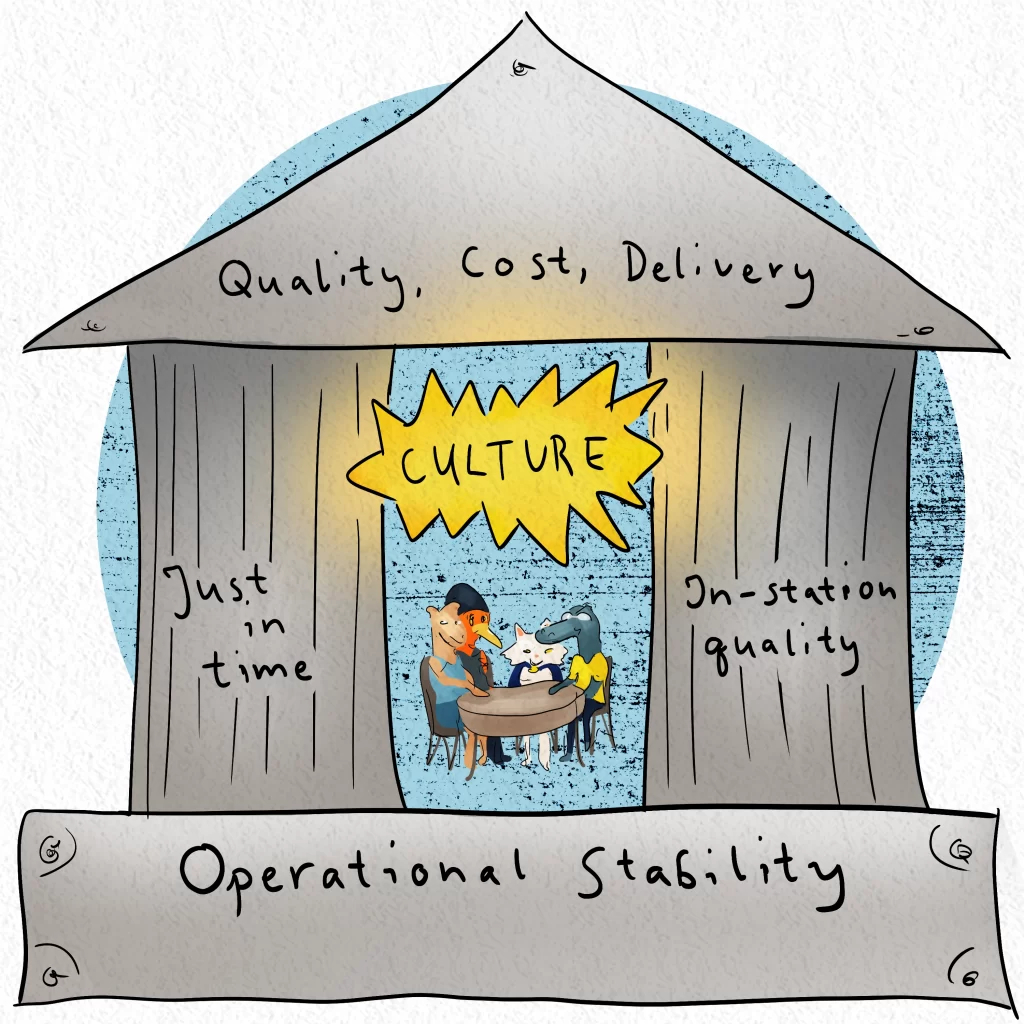
Yes, the Toyota Production System (TPS) was invented by the Japanese car manufacturer Toyota, which is now a multinational conglomerate. But it’s relevant to your small- or medium-sized business too!
See, TPS is just one of many different models for Lean Manufacturing. And while lean isn’t the best approach for every scenario, it’s definitely worth understanding the various lean manufacturing models so that you can recognize when and how to apply the principles from each one.
The Zattatat crew was interested in learning about the Toyota Production System…
If you’re a regular here at Zattatat, you know that the Zattatat crew consists of Gary, a full-time accountant and part-time baker in his 40s; Rhonda, who worked as a nurse until her early 50s and then took early retirement and started a woodworking business; and Princess Capybara, who though only in her 30s can already call herself a serial entrepreneur since she cashed out of her biotech startup and started making and selling concrete items that she molds herself.
Recently they were catching up and enjoying the fall weather.

The gang realized that they had all heard the phrase lean manufacturing, but didn’t know exactly what it was or whether it might be useful to them. So they decided to ask their friend Process Cat, manufacturing superhero and insatiable consumer of coffee.

Process Cat was excited to help. He explained that there are several different lean manufacturing methodologies. And he suggested that they start by talking about…
The Toyota Production System
Toyota, as you probably know, is a Japanese car manufacturer. And in the years after World War 2, when it was still a new company, it faced challenges including both lack of funding and lack of demand. So they had to get creative.
One of the main things they did was to save money by reducing the amount of inventory that they carried at any given time. They also reduced other “safety buffers” such as additional time built into the schedule.
But of course, that strategy only worked because of the system that supported it.

The end goal is of course the “roof” of this structure, delivering a high-quality and low-cost product to the customer in a short amount of time. And the two pillars that support that are Just in Time and In-Station Quality.
Just in Time
Attributed to Jakiro Toyoda, Just in Time (JIT), means keeping inventory low at all stages of the production system. This is accomplished by using a “pull” system.
To understand the difference, think about the monthly subscription purchases that many online retailers offer for (for example) toothpaste or laundry detergent. You choose your quantity ahead of time, then every month your credit card automatically gets charged and the supplies show up at your door.
The problem with this system is that you’ll probably end up with slightly more than you can use of the product, so eventually it starts building up. This means that you’re tying up money in inventory, and it also means that you need space to store it. With toothpaste in a household, you might decide these minor disadvantages are worth it for the convenience of not having to remember to buy toothpaste. But in a factory that’s trying to be as efficient as possible, as Toyota needed to be in the early days, it’s better to metaphorically go to the grocery store every time you need toothpaste, and only buy what you actually need.
So, with the Just in Time system, at each stage of the process, operators take what work-in-progress inventory they need from a stock room. And only *then* do the upstream operators make more of that part to restock the supply room.
In-Station Quality
Credited to Sakichi Toyoda and also called “jidoka,” in-station quality means not waiting until the end of a manufacturing process to screen for defects. Instead, there should be quality control checks after (ideally) each station in the process. There are two main reasons for this: one, that way you’re not “throwing good money after bad” by putting more resources into further processing a part that’s going to have to be scrapped anyway. And two, since you know exactly at what point in the process the defect occurred, it’s easier to figure out what caused the problem so you can prevent it from happening again.
But, these pillars need two additional things to function well: operational stability and institutional culture.
Operational stability means things like standardized workflows, reliable supply partners, well-maintained equipment, and a level workload. In other words, things are running as smoothly and consistently as possible. Institutional culture means that all of the people in your organization need to be on board and committed to the system and to continued improvement.
With all these pieces in place, value flows efficiently from raw materials, through the organization, to deliver a high-quality product to the customer. You can think of it like water flowing freely through a river with no eddies…

Weekly Challenge:
Look through your business (or maybe even your personal life) and see if there are areas where you could benefit by instituting Just in Time or In-Station Quality principles. And come back next time to learn about a related but broader system, the Toyota Way!



